
Posted on 18 August 2014
Rounding-off a series of Chromebook updates here on UMPCPortal are my thoughts on the Lenovo N20p Chromebook which is built around a design I tested recently in the Lenovo Flex 10. In my opinion it adds a lot of value to a laptop and is actually more suited to a laptops design than a ‘yoga’ style tablet-capable design. Like the Flex 10 the N20P has a 270-degree fold-back ‘stand mode’ touchscreen and comes with a basic set of specifications. Atom CPU, 2GB of RAM and 16 GB of eMMC storage.
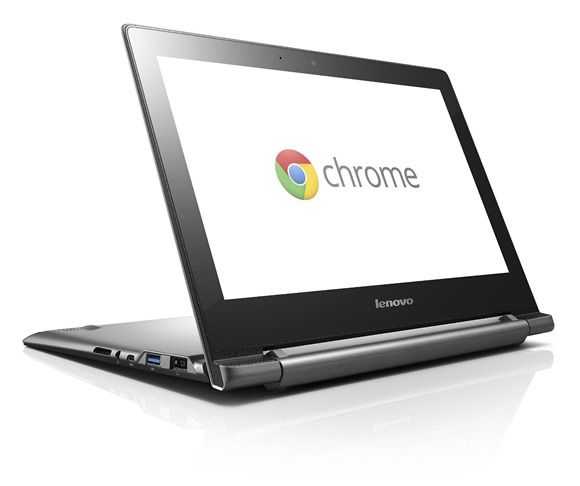
Unlike the Flex 10 this Chromebook doesn’t have a touch-friendly user interface option and that, for the time being, could be seen as a big disadvantage. In practice though there are a lot of things you can do with a touchscreen in stand mode and web-browsing is an important one. When I did the in-depth Lenovo Flex 10 testing I found the unit to be more practical as a partner PC than a 7-inch or even 10-inch tablet without a stand. Magazine-style reader apps (I use Feedly) are great with coffee as is a Facebook or Tweetdeck ‘easel.’ Video applications work well too because this seat-back friendly mode brings the screen closer to the eye and, at full fold-back, has great stability. If you want to lift the screen to eye-height you’re also able to fold the screen to 180-degrees and prop up the unit to balance on the keyboard edge. Flex is good and worth paying a little extra for.
At current prices the Lenovo N20p is going to set you back about $60-$80 more than the cheaper Chromebook options which is a significant 25%-33% more than the cheaper ASUS and Acer options and, presumably because of the design, it’s a little heavier than, say, the ASUS C200. There’s a 34.8Wh battery inside which is OK, but not the biggest either.
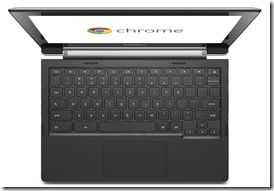
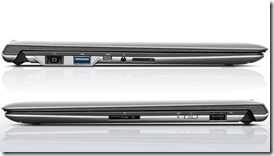
Screen resolution is a basic 1366×768 and there’s no mention of wide-viewing angles in the Lenovo marketing materials. A USB 2.0. USB 3.0, SD card, headset and full-size HDMI port are on-board and there’s AC-capable WiFi.
Although there isn’t a perfect match between a 2-in-1 design and ChromeOS now the Lenovo N20p offers the consumer something that’s been missing from Chromebooks up until now – fun. As ChromeOS develops with new features and improved touch capability the N20p could evolve into an attractive secondary PC for home and holiday use. If the AccuType full-size keyboard is good, this might make a good conference or hotel PC. In the Education market students are going to be far more excited about this Chromebook design.
If you’ve got the Lenovo N20p or are thinking of buying it (available at Amazon for $310 in the USA) let us know your thoughts.
To assist you in choosing a Chromebook we’re adding selected (lightweight, portable) models to our database here. The N20p will be added shortly.
You can find out more about the N20p at Lenovo’s US website.

Posted on 19 July 2014
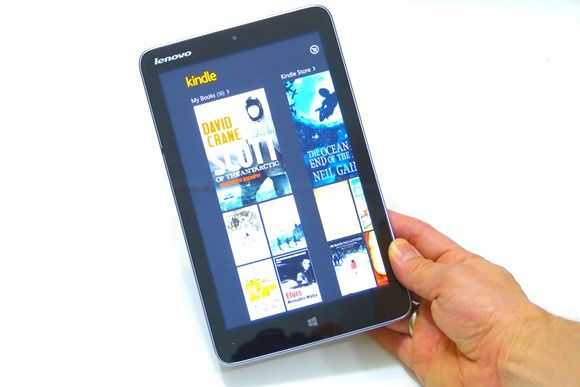
I was very sad to read news on Friday that Lenovo was getting out of the small screen tablet market. It turns out, however, that it’s not true. Lenovo issued a press release yesterday stating that they “are not getting out of the small-screen Windows tablet business.” In addition to that they stated that they will have a new 8-inch and a new 10-inch Windows tablet ready for the holidays.
This is great news because it supports my theory that 8-inch Windows tablets haven’t done badly at all. While I believe that the innovation will be focused in the 10-13-inch tablet space over the next years the Dell Venue 8 Pro popularity, recent announcements from Microsoft and my own experience tells me that the 8-inch tablets aren’t bad at all. At $225 the Dell Venue 8 Pro is an absolutely brilliant tablet and as I cycle through them in my daily use, I can’t say that any of them are bad.
Lenovo Press release.
While new models are in the pipleline Lenovo did say that the Thinkpad 8 is now longer for sale in the US. The Miix 2 8 is out of stock right now too so let’s hope we get that one back on the shelves soon.
So let’s continue to think about low-end, mid-range and the high-end ultra-mobile PC space.
Info via GigaOM

Posted on 06 June 2014
When I reviewed the 270-euro Lenovo Ideapad Flex 10 recently I knew it would be a great candidate for an SSD upgrade. This fanless, touchscreen hybrid is the very model of a modern casual portable laptop but it was fitted with a really poor quality hard drive that was obviously holding the system back. After completing the SSD upgrade yesterday I can report that the difference is amazing. Applications are starting in half the time, the PCMark score is up 70% and the system works as it should. No more drive activity slow-downs and a huge lift in the user experience. I’ve done a lot of SSD upgrades over the years but this one is probably the most impressive.
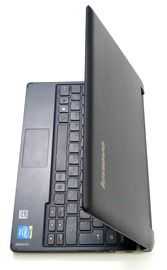
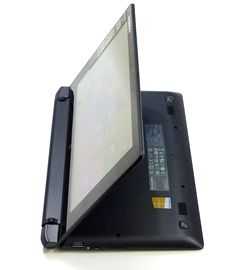
The Lenovo Flex 10 has a 270-degree fold-back screen. Stand-mode is very useful.
I’ve dropped a MydigitalSSD BP4 in as a test (I had it from a previous test I did with an Acer V5) but you can shop around for a good deal. On Amazon.com there’s an offer on the 7mm 128GB Sandisk SSD that would be perfect for this. $69.99 is a great deal. [Affiliate link.]
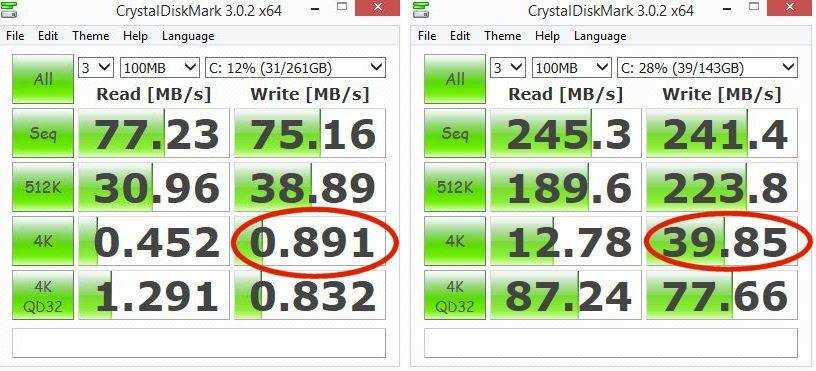 Over 40X improvement in the very important 4K write speed. Superb result!
Over 40X improvement in the very important 4K write speed. Superb result!
In a PCMark test the device scored 70% better. 1521 with HDD, 2579 with SSD. Application start-up times are drastically reduced. DriftMania started in 10 seconds compared to 21 seconds with the HDD. Lenovo Photo Show started in 5 seconds (11 with HDD.) Facebook, IE, Chrome and Paint also started about twice as quick. Battery life has probably been improved too but I haven’t tested it yet. Considering the heat that was generated by the HDD and the time it took to get things done there’s going to be a clear real-world difference in how much you can get done on this. Silent operation is a dream too. I’ve connected a USB3.0 docking station and I’m writing this with external screen, keyboard and mouse and it’s a very nice way to write.
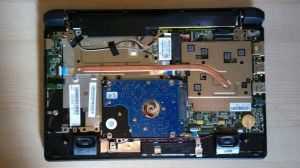
Inside the Flex 10. RAM is soldered. No fans. Disk and WiFi module are easy to remove
How to upgrade to SSD on the Lenovo Flex 10
To do the upgrade you’ll need a USB recovery drive (create using Windows 8 tools on a 16GB USB stick or CDROM.) I chose to use an external USB 2.5-inch SATA adapter so that I could do all the imaging on a faster PC. Obviously you will lose your warranty and there’s a possibility of failure or breakage so take care and own the risk!
- Reduce partition size on C: to bring total disk size into range of SSD. Use Windows 8 disk manager to shrink the volume. (Ideally do a system restore to factory setup beforehand.)
- Remove back of Lenovo Flex 10. This is a little tricky. Two screws are hidden under the rubber feet and one has a seal that will need to be broken. You lose your warranty at this point. You can use a thumbnail to carefully prise the unit apart. It takes time and care, especially at the front corners, but it’s certainly not a sealed unit.
- Remove hard disk. It’s an easy 4-screw removal process. (Note: You can upgrade the WiFi too. The basic 2.4Ghz single channel unit has good reception but would benefit from a dual-channel upgrade IMO.)
- Put hard disk in 2.5-inch USB3.0 adapter.
- Take Acronis TrueImage disk image of hard drive. (Took 40 minutes on a fast SSD-based Ultrabook using free 30–day trial.)
- Remove drive from adapter and store with care
- Insert SSD into adapter.
- TrueImage disk copy the saved image to the SSD drive. (You might get an error saying it won’t boot but you can ignore that.)
- Remove disk from adapter and install in Lenovo Flex 10
- Enjoy
There are still clear limits with this setup. The Lenovo Flex 10 doesn’t have a powerful CPU and that shows itself when you start using browser-based apps. Google Drive and the associated productivity apps won’t be much fun (Chromebooks are way more suited to this) but I suspect the free Office Home and Student will be a far better experience. GPU and video decoding power is pretty good though so you’ll be able to watch 1080p videos and play Windows 8 RT games without any issues. XBMC and Openelec work well. Read my full review, or my summary review video for more detail.
I’m a huge fan of the 270-degree fold-back screen (more so than the 360-degree fold-back) and a huge fan of ‘lightweight’ computing. Based on what I’ve seen with the Flex 10 there’s scope for Lenovo to make a seriously useful Flex 11 with a quad-core Baytrail-M and a low-cost 64GB SSD. Until then though, this Flex 10 SSD upgrade has created an extremely well-balanced hybrid netbook that covers a wide range of activities. I’m keeping it.
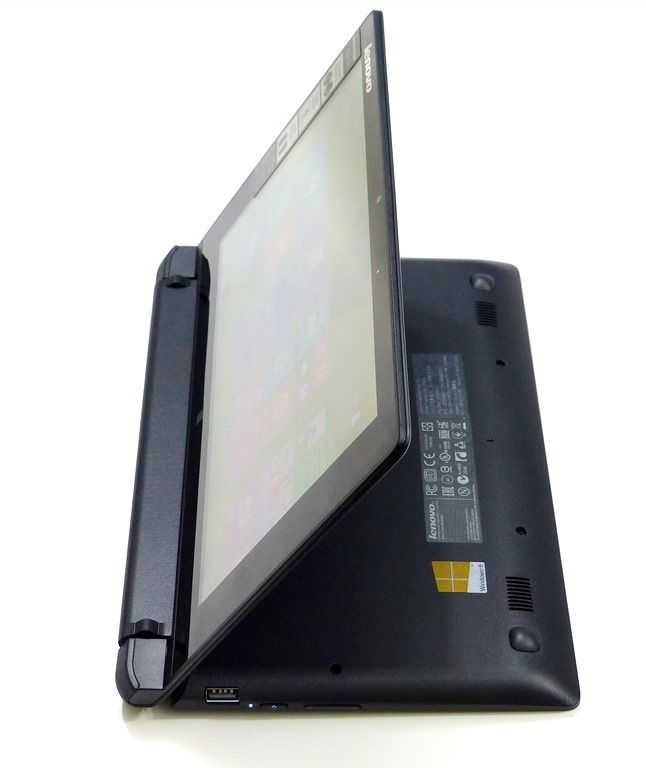
Posted on 30 May 2014
I’ve just finished the full review of the Lenovo Flex 10 for Notebookcheck.net. Check it out for a very detailed look at performance and features. Below you’ll find my overview review video and some personal opinion on the Flex 10 which I think is a very interesting package for around $320 / $300 Euro
Read the full story
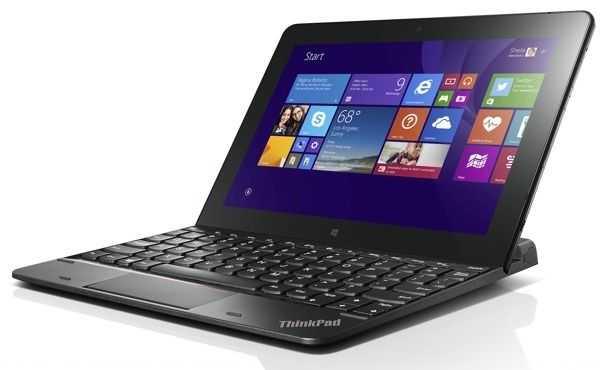
Posted on 13 May 2014
There’ll be a 4GB option too! Lenovo have launched the Thinkpad 10 along with a number of accessories. Based on the Intel Baytrail-T Z3795 the Thinkpad has almost all the specifications you could wish for. It’s targeted at the mobile workforce but the for ultra-mobile PCs fans this 60 gram, (1.31 pounds) PC is one to take a close look at. 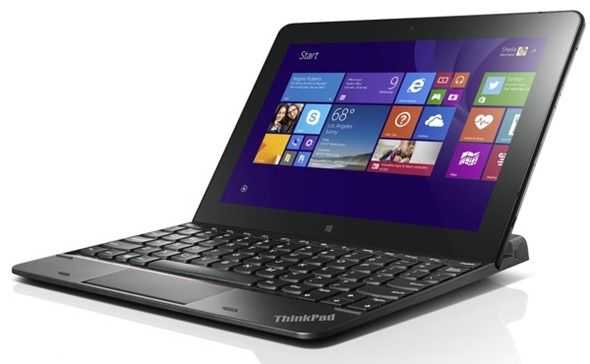
The Thinkpad 10 is shown above with the Ultrabook’ keyboard, a $129 accessory that we don’t think has a battery inside but looks to offer a high quality working area. There’s a dock available too. (UBS 3.0 we believe) The digitizer is said to be optional so expect something in the region of $100 for that and the digitizer pen. 128GB and 4GB could take prices very high too. A fully loaded Windos 8.1 Pro model with Ultrabook keyboard is likely to be around $1000 but it could be the only PC some people will need. At under 600 grams it’s going to be a lot lighter than the Dell Venue 11 Pro (Baytrail) which is very important for a tablet. It will be fanless and with the USB3.0 port, microHDMI and separate charging port, very flexible in terms of connectivity and usage.
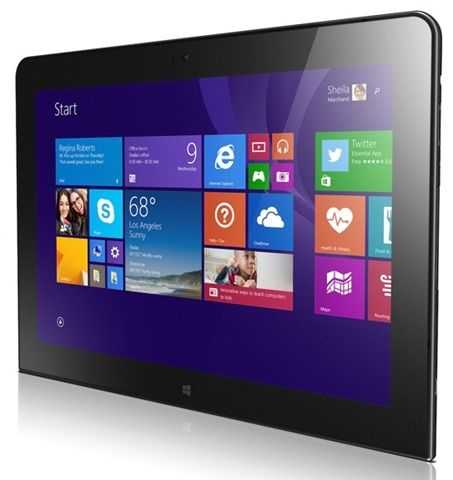
Lenovo Thinkpad 10 specifications.
- CPU: Intel Baytrail-T Z3795 (1.6Ghz – 2.4Ghz)
- 10.1? 1920×1200 screen
- 2/4GB RAM
- 64/128GB emmc Flash
- 802.11 abgn / BT 4.0/3G
- 8MP rear camers. 2MP front camera.
- Micro SD, full USB3.0, MicroHDMI, audio port.
- Options: 3G/4G, digitizer, Windows 8 Pro.
Like all Windows 8 tablets on Baytrail it will have a TPM module inside, will support basic Bitlocker disk encryption, support InstantGo and, with the Windows 8 version, will come with free Microsoft Office Home and Student.
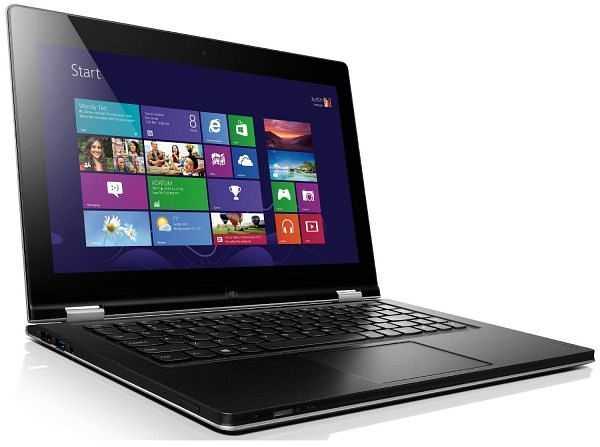
Posted on 09 May 2014
The Yoga 2 11 isn’t just a Yoga-for-the-masses or an Ultrabook without the sticker. It’s a look into the future of Ultrabooks
It’s a fanless, lightweight, convertible, touchscreen Windows PC and costs under 600 Euro. It’s the latest incarnation of the Lenovo Yoga 11 Ultrabook but it’s running a Baytrail processor. There’s four cores instead of two, and no fan. There’s a USB3.0 connector and a total weight of just 1.45KG. This is looking like a pretty smart 2-in-1. Notebookcheck have just given it an 80% rating in their review.
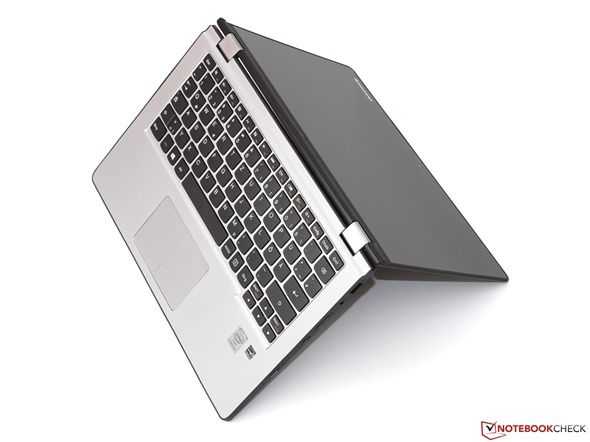
600 Euro isn’t exactly mainstream pricing for a little notebook. The Lenovo Ideapad Flex 10, a slightly smaller but lighter Baytrail-M (N3520) based laptop with ‘tent mode’ and touch is under 300 Euro but I would expect that 600 Euro to drop by 10-25% fairly quickly and for short-term offers to appear around 450 in the future.
In the detailed review at Notebookcheck we see that it has a 500GB HDD inside. Of course I’m immediately thinking of SSD upgrade possibility here but it’s a 5mm 2.5” SATA drive so options are limited. The performance of the Celeron Baytrail-M CPU is better than the one I’ve just tested on the Intel NUC so it’s in an acceptable area but the user experience would be vastly improved with an SSD.
A 35Wh battery returns about 5 hours of web-usage.
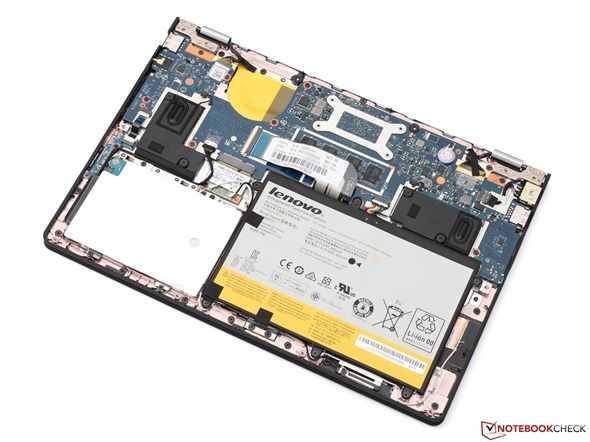
A fanless, lightweight, convertible touchscreen notebook at a consumer-friendly price is, in my opinion, exactly what the market needs in order to make notebooks interesting again. The Lenovo Yoga 2 11 shows some weaknesses in the processor department and a higher-resolution display would be appealing but this is still a capable device and with an SSD upgrade (and a $100 discount to pay for it!) could be a real winner.
Check out the full review and Notebookcheck.net
More information in our database.
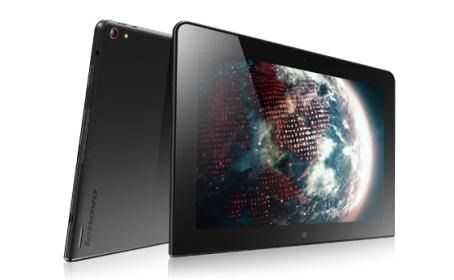
Posted on 08 April 2014
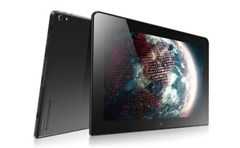 Miix 2 8 and Miix 2 10, Thinkpad 8 and Thinkpad 10. It makes sense, right? The Thinkpad 10 is due to launch next month if the news is correct. Expect something to challenge the HP Elitepad 1000 and Fujitsu Q584 and something that could have all the great qualities we’ve already seen on the Thinkpad 8 but with more processing power, more RAM, an optional keyboard and a lot of business options. Yes, pricing is going to be on the high side but if they can engineer something lighter than the competition, this could be the one.
Miix 2 8 and Miix 2 10, Thinkpad 8 and Thinkpad 10. It makes sense, right? The Thinkpad 10 is due to launch next month if the news is correct. Expect something to challenge the HP Elitepad 1000 and Fujitsu Q584 and something that could have all the great qualities we’ve already seen on the Thinkpad 8 but with more processing power, more RAM, an optional keyboard and a lot of business options. Yes, pricing is going to be on the high side but if they can engineer something lighter than the competition, this could be the one.
Read the full story

Posted on 02 April 2014
Intel’s developer forum for China kicked of today in Shenzen. We weren’t able to attend but we’ve been following it closely. Much of the news related to mobile and tablet PCs is to be found in the forum session PDFs and we’ve already seen how Intel are launching a back-to-school initiative based around new Celeron and Pentium Baytrail-M CPUs and have published details of USB3.1.
Most of the 35 minutes keynote is focused around the ecosystem in China but it includes info on the 40 million tablet target, news about Realsense (Lenovo S440 with integrated Realsense demonstrated,) Edison (now on Atom) and SoFIA, the integrated 3G/Atom platform for Android (and possibly Windows) tablets and phones.
Read the full story








 Over 40X improvement in the very important 4K write speed. Superb result!
Over 40X improvement in the very important 4K write speed. Superb result!




















